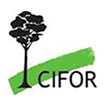
After three decades of implementation of the Support Program for the Preservation of Biodiversity and Fragile Ecosystems in Central Africa (ECOFAC), stakeholders believe that conservation, protection of endangered species, and reductions in poaching are the prime successes of the initiative.
Their perceptions are captured in a new evaluation report of the six-phase ECOFAC programme, which kicked off in 1992 thanks to the European Union (EU)’s political will to advance sustainable management of Central Africa’s natural resources. The report was prepared by Belgium-based ADE (Evidence for Better Policy) and the Center for International Forestry Research and World Agroforestry (CIFOR-ICRAF).
ECOFAC, now in its sixth and last phase, has so far cost over EUR 250 million and is the oldest European programme in the sub-region. Under the guidance of the Economic Community of Central Africa States (ECCAS), the programme has been implemented in Cameroon, the Democratic Republic of Congo (DRC), Gabon, Central African Republic (CAR), Chad, Sao Tomé & Principe, Equatorial Guinea, and the Republic of Congo (RoC).
The body of work has sought to reconcile the viability of forest ecosystems and the rational exploitation of Central Africa’s forest resources, by promoting a green economy marked by endogenous, sustainable, and inclusive economic development, and fighting against global warming.
Specific goals included increasing knowledge of forest ecosystems, raising public awareness of conservation issues, training specialists in conservation and rational use of forest resources, rehabilitation of protected areas, reducing poverty among local populations, development of infrastructure and the improvement of surveillance systems, amongst others.
Measuring direct and indirect impact
To assess the impact of ECOFAC, the authors of the evaluation report adopted an approach based on triangulation of different sources of data, including 15 in-depth interviews, documentary review, global survey of 371 experts, satellite images, and two case studies in the Lopé National Park in Gabon and the Dja Wildlife Reserve in Cameroon.
These instruments were designed to collect responses on the direct and indirect impact of ECOFAC’S various phases across a range of elements, notably: species, ecosystems and habitats; socio-economic dimensions; institutional dimensions; science and research; institutional influence; resilience to climate change; and environmental diplomacy.
The data – including satellite imagery gathered across variables such as forest cover, deforestation, infrastructure, access to health facilities and population – was then analysed using general-purpose statistical software programme STATA.
Martin Tchamba, a researcher at the University of Dschang and a co-author of the report, said that the approach made it possible to identify and evaluate direct and indirect impacts in a relatively short space of time, and to fill some of the gaps in the programme’s monitoring and evaluation (M&E) system. “The triangulation of different data sources provides an opportunity to gain a better understanding of the impact of the program and the underlying mechanisms that explain this impact,” he said.
“However, there are a number of limitations to this approach that must be borne in mind if the results of the study are to be interpreted rigorously,” Tchamba added. Amongst these shortcomings, he noted that the survey was not fully representative of ECOFAC programme and conservation ecosystem stakeholders in Central Africa, and that there were limitations in its analysis of satellite data.
Celebrating progress, acknowledging challenges
Despite the challenges of carrying out the assessment, a plethora of concrete achievements were easily identifiable.
A case in point is the widespread expansion of protected areas in Central Africa, of which about 40 percent are supported by ECOFAC. Prior to the kick-off of ECOFAC in 1992, there were 103 protected areas covering a total area of 497,345 square kilometres. Today, there are 233 protected areas covering 835,814 square kilometres, and 28 protected areas, spanning a total of 375,806 square kilometres, have joined the ECOFAC programme.
The number of endangered wildlife and endemic species benefiting from protection measures has also increased in all countries supported by the programme. Following the assessment, protection measures for threatened wildlife species increased slightly (41 percent) or significantly (29 percent), while there was a slight (38 percent) or strong (23 percent) increase in protection measures for endangered endemic species.
In addition, the ECOFAC programme has facilitated a 43 percent improvement in connectivity between protected sites, and sites of biological interest, through functional wildlife corridors. It has also, to some extent, contributed to reducing the conversion of critical habitats for exploitation.
However, despite the implementation of protection measures, CIFOR senior scientist Richard Eba’a Atyi, another co-author of the report, said that the number of fauna, flora, and endemic species that are considered ‘threatened’ has increased significantly over the last 30 years, and their geographical distribution has deteriorated. “Appropriate conservation measures and management plans are needed to prevent heavily armed Sahelian nomadic pastoralists, illegal miners, and poachers from destroying the region’s natural vegetation and biodiversity,” Atyi said.
In the domain of tourism, activities have significantly grown in the protected areas of Central Africa following the ECOFAC programme, resulting in job opportunities for residents of communities peripheral to those protected areas. A notable case is that of the Lopé National Park in Gabon, which was listed as a UNESCO World Heritage Site thanks to the ECOFAC programme.
ECOFAC is also credited for the birth of the Network of Central African Protected Areas (RAPAC), a multi-actor platform for exchange and action.It has also inspired management models for other projects, and fast-tracked the adoption of more efficient agricultural practices to cope with challenging climatic conditions.
The programme has led to significant growth in the production of knowledge, development of academic curricula, and built capacity in the field of conservation and protected areas in Central Africa. The development of income-generating activities for local communities and people living on the outskirts of protected areas, access to better health care for local populations, and primary schooling for children living on the outskirts of protected areas, have all seen marked improvement.
Amid these recorded successes , Jean-Charles Rouge, another author of the report and a scientist at CIFOR-ICRAF, observed that many protected areas in Central Africa are currently under increasing demographic and anthropogenic pressure.
“Human/wildlife and land conflicts therefore remain a major challenge in the vicinity of protected areas – although the ECOFAC programme seems to be contributing to a certain extent to reducing these conflicts,” he said. Several interviews also revealed that the protected area status of national parks sometimes represents missed opportunities for local communities and Indigenous peoples, Rouge noted.
ECOFAC draws to a close at the end of 2023, and will be replaced in 2024 by NaturAfrica, an innovative people-centred approach to biodiversity conservation across the continent.
Acknowledgments
This evaluation was conducted thanks to the Central African Forests Commission (COMIFAC), and its technical and scientific entity Central Africa Forest Observatory (OFAC), with support from the Strengthening and Institutionalization of the Central African Forest Observatory (RIOFAC) project.
We want you to share Forests News content, which is licensed under Creative Commons Attribution-NonCommercial-ShareAlike 4.0 International (CC BY-NC-SA 4.0). This means you are free to redistribute our material for non-commercial purposes. All we ask is that you give Forests News appropriate credit and link to the original Forests News content, indicate if changes were made, and distribute your contributions under the same Creative Commons license. You must notify Forests News if you repost, reprint or reuse our materials by contacting forestsnews@cifor-icraf.org.












